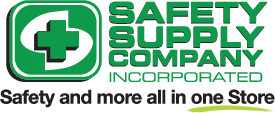The electrical field is an essential industry, powering homes, businesses, and infrastructure. However, it’s also one of the most dangerous, with workers frequently exposed to hazards like electric shocks, falls, burns, and repetitive strain injuries. Properly managing injuries in this field is crucial, not only to ensure individual well-being but also to create a safer working environment. Here, we’ll discuss some best practices for handling injuries in the electrical field, focusing on prevention, response, and recovery.
1. Prioritize Safety Training and Hazard Awareness
The first step in managing injuries is preventing them. Effective safety training is essential for all electrical professionals. This includes understanding the risks associated with different tasks, such as high-voltage work, working with live wires, and handling tools and machinery. Safety protocols, like lockout/tagout procedures, can significantly reduce the risk of electrocution or injury caused by equipment unexpectedly starting up.
Encouraging hazard awareness among employees can foster a proactive approach to safety. This involves recognizing potentially hazardous situations, understanding how to use personal protective equipment (PPE) effectively, and knowing the right steps to take if an emergency arises. By staying vigilant, workers can often avoid risky situations that might lead to injury.
2. Responding to Injuries Quickly and Effectively
In the event of an injury, the immediate response can make a substantial difference in the severity of the injury and the long-term recovery of the affected worker. In the electrical field, injuries are often severe, and quick response is crucial. Supervisors and team members should be trained in first aid, specifically for electrical burns, shock treatment, and handling falls.
If an electrical shock occurs, workers should immediately stop the current flow by turning off the power source. They should avoid directly touching the injured person while they are still in contact with the live current. Once the injured worker is clear, first aid, such as CPR if the individual is unconscious or not breathing, should be administered while waiting for emergency medical help.
Burn injuries, a common result of electrical accidents, should be treated by cooling the burn with water and covering it with a sterile cloth. Open wounds should be kept clean to prevent infection, especially in field environments where dirt or debris is common. In all cases, professional medical attention should be sought as quickly as possible.
3. Implementing Follow-up Care and Rehabilitation
After the initial treatment, a proper rehabilitation plan is crucial. Electrical injuries, particularly severe shocks or burns, often require extended recovery periods. Companies should be proactive in arranging follow-up medical appointments and physical therapy sessions for injured workers. Clear communication with healthcare providers can help ensure a treatment plan that considers the unique demands of electrical work, allowing for a more tailored recovery approach.
Additionally, psychological support should not be overlooked. Experiencing a workplace injury can lead to anxiety or a fear of returning to work, especially in high-risk environments. Employers can help by offering counseling and providing a supportive workplace culture that encourages open conversations about mental health.
4. Reviewing and Updating Safety Protocols
Each injury, whether it’s minor or severe, presents an opportunity for companies to review and improve their safety protocols. Conducting post-incident reviews can identify the root causes of accidents and help implement measures to prevent future occurrences. This may include revising safety procedures, enhancing training programs, or upgrading PPE.
The feedback loop created by reviewing and updating safety protocols not only reduces the likelihood of repeated injuries but also demonstrates a commitment to worker safety. Workers who see that their well-being is prioritized are more likely to follow safety protocols and stay alert on the job.
Conclusion
Handling injuries in the electrical field requires a comprehensive approach encompassing prevention, immediate response, recovery, and continuous improvement. By prioritizing training, fostering a culture of safety, and learning from incidents, the industry can minimize risks and create a safer environment for everyone involved. Electrical work is demanding, but with the right practices in place, companies can protect their workers and ensure a sustainable, injury-resilient workforce.

